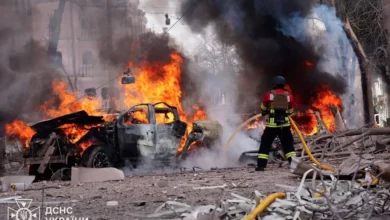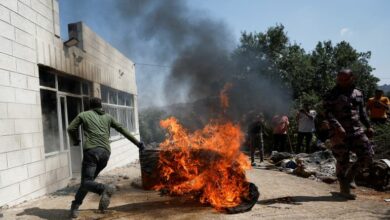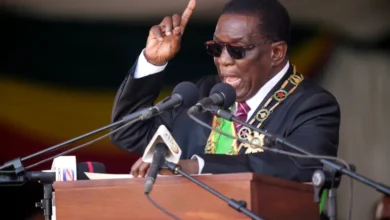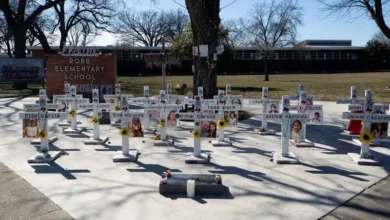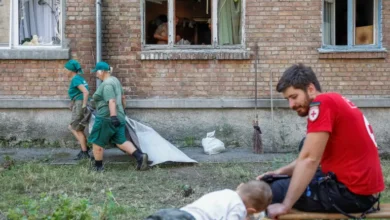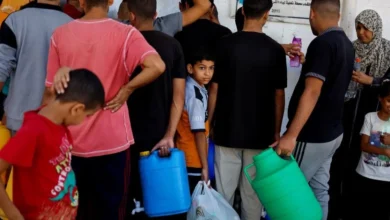New Hamas Gaza truce proposal outlines exchange of captives for prisoners
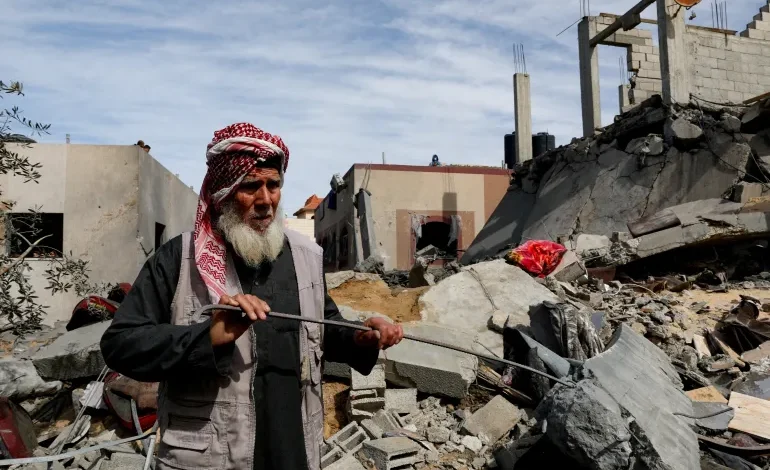
Hamas has presented a new ceasefire plan to end Israel’s war on Gaza that includes the release of Israeli captives in exchange for Palestinian prisoners, 100 of whom are serving life sentences.
It would be a three-phased ceasefire, with each stage lasting 42 days, sources told Al Jazeera of the Hamas proposal.
In the first stage, Hamas said Israeli forces must withdraw from al-Rashid and Salah al-Din streets to allow for the return of displaced Palestinians and the passage of aid, the sources said. Salah al-Din is the main arterial road that runs north to south in the strip.
The Palestinian armed group said the initial release of Israelis would include women, children, the elderly and ill captives in exchange for 700 to 1,000 Palestinian prisoners held in Israeli jails, according to the proposal seen by the Reuters news agency. It includes the freeing of Israeli “female recruits”.
Hamas said 50 Palestinian prisoners of its choosing – 30 of whom are serving life sentences – should be freed in exchange for the release of one female Israeli reservist held captive in Gaza, sources told Al Jazeera.
The group said in the second phase of the plan a permanent ceasefire must be declared before any exchange of captured soldiers could begin, while the third stage would involve initiating a reconstruction process in Gaza and lifting Israel’s siege on the enclave.
Israeli Prime Minister Benjamin Netanyahu’s office said on Thursday that the new proposal was still based on “unrealistic demands”. Israel’s war cabinet and the larger security cabinet were to meet later on Friday to discuss the proposal, which Hamas submitted to international mediators.
Reporting from occupied East Jerusalem, Al Jazeera’s Willem Marx said: “The central sticking point in Israel and Hamas’s negotiations, which has been an irreconcilable challenge for both parties in recent weeks, is essentially Israel’s demand for an absolute victory over Hamas, contrasted with Hamas’s desire for a permanent ceasefire.”
Days of negotiations with Hamas this month over a ceasefire in Gaza failed to achieve a breakthrough before the start of the Muslim holy month of Ramadan this week – the informal deadline for a deal.
Mediators Qatar, Egypt and the United States spent weeks trying to narrow differences between Israel and Hamas over what a ceasefire would look like as a deepening humanitarian crisis has a quarter of the population in the battered Gaza Strip facing famine.
Egypt is seeking to reach a ceasefire in Gaza, ramp up aid deliveries to the strip and allow for displaced Palestinians in the south and centre of the enclave to move to the north, President Abdel Fattah el-Sisi said on Friday.
“We are talking about reaching a ceasefire in Gaza, meaning a truce, providing the biggest quantity of aid,” he said.
El-Sisi warned against the dangers of an Israeli incursion into Rafah in southern Gaza on the border with Egypt, which is now home to more than half of the enclave’s population of 2.3 million people, many of whom have been displaced multiple times.
Marx reported that “the Israelis also say they’d like to keep a potential invasion of Rafah open as an option, but Hamas, if they push forward with the negotiations, say they would like to see all hostilities end as soon as possible.”
Israel has long warned of a ground invasion of Rafah, an area of 64sq km (25sq miles) into which about 1.4 million Palestinians have been crammed by Israeli bombing and ground operations in other parts of the enclave.
Mustafa Barghouti, secretary-general of the Palestinian National Initiative, told Al Jazeera on Friday that the latest proposal is “much more flexible and forthcoming” compared with previous ones.
“The most important thing of dispute here is that Hamas and the resistance movement insists that people who were evicted by force, by bombardment from their homes, will be allowed to go back to the north and Israel wants to discriminate [against them],” he said.
“Imagine – they want to allow women and children but not the men. They want to cut every family into two pieces, and that is unacceptable.”
Barghouti said he expects Netanyahu to impose “every possible obstacle to prevent this deal from taking place because he knows that once this war is over, he will be going to prison. He knows very well that he will be accused of failure on October 7, but also four cases of corruption are waiting for him.”
Hamas said ceasefire negotiations had faltered over the past few weeks due to Netanyahu’s rejection of its demands, which include a permanent ceasefire, an Israeli withdrawal from the strip, the return of the displaced in the south of the enclave to the centre and the north, and stepping up aid without restrictions.
In February, Hamas received a proposal from truce talks in Paris, which included a 40-day pause in all military operations and the exchange of Palestinian prisoners for Israeli captives at a ratio of 10-to-1 – a similar ratio to that in the new ceasefire proposal.
Israel rejected that plan, citing its long-held goal of not ending the war until it destroys Hamas.
The war was triggered by Hamas-led attacks on southern Israel on October 7, in which 1,139 people were killed, according to Israeli officials, and dozens were taken captive.
Since then, Israel’s air, sea and ground assault on Gaza has killed more than 31,000 Palestinians and wounded more than 71,500, according to Palestinian health authorities.




 Top Stories
Top Stories











